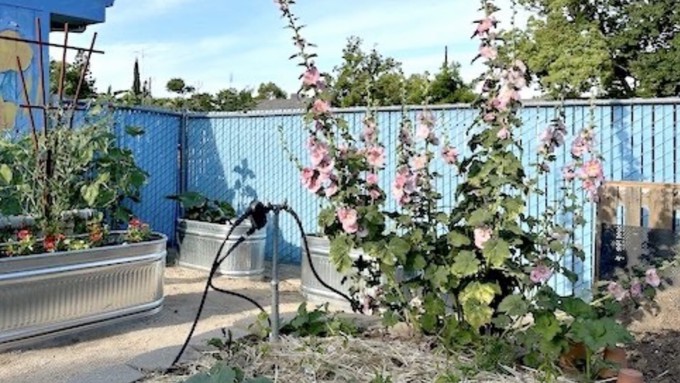
Still plenty of time for nonprofits and schools to apply

The Tahoe Park Neighborhood Association Community Garden was among the most recent recipients of the Saul Wiseman Garden Grants, presented by the Sacramento Perennial Plant Club. Photo by Risë Ryan, courtesy Sacramento Perennial Plant Club
With school starting again, the region's garden groups and community nonprofits also swing back into action soon. It's a good time to remind them all that grants are available for area gardening projects from local garden clubs. It's not too early to put the application deadlines on the calendar.
The Folsom Garden Club presents grants each year to nonprofit organizations within the city of Folsom. The funds are raised each year from the club's garden tour, and they typicaly are distributed in amounts from $200 to $1,500. The submission deadline this year is Oct. 11.
The grants committee evaluates applications with the following criteria:
-- The botanical, horticultural, historic, and/or educational interest of the project.
-- The community impact of the project: The project location, public access, and interest, etc.
-- The planning, future maintenance and/or monitoring of the project: How it was developed and how it will be executed and maintained.
-- Funding history and plans: Other sources of funds, current budget, and goals for future funding.
The application and other information can be found here: https://www.folsomgarden.org/2023-grant-application/
Incidently, the Folsom Garden Club also offers scholarships for college students in Placer, Sacramento, El Dorado or Yolo County pursuing degrees in horticulture, landscape design, botany or related topics. Application deadline for the 2024-25 academic year is April 15, 2024. More information is available here.
Another grant program is offered by the Sacramento Perennial Plant Club. The Saul Wiseman Gardening Grants, the club notes, are awarded annually to nonprofit groups, schools and community groups within Sacramento County. The funds are intended to help with gardening projects or activities that emphasize education, service and enhancement to the area's diverse community.
This past year, the club presented grants to four schools and three other gardens: the Grassland Garden at Niños Parkway in South Natomas, the Project AWE Youth Farm in Elk Grove, and the Tahoe Park Neighborhood Association Community Garden.
The deadline for these grant applications is Jan. 12, 2024. The application form can be downloaded at https://sacplants.org/grants/
Comments
0 comments have been posted.Sacramento Digs Gardening to your inbox.
Sites We Like
Garden Checklist for week of July 21
Your garden needs you!
* Keep your vegetable garden watered, mulched and weeded. Water before 8 a.m. to reduce the chance of fungal infection and to conserve moisture.
* Feed vegetable plants bone meal, rock phosphate or other fertilizers high in phosphate to stimulate more blooms and fruiting. (But wait until daily high temperatures drop out of the 100s.)
* Don’t let tomatoes wilt or dry out completely. Give tomatoes a deep watering two to three times a week.
* Harvest vegetables promptly to encourage plants to produce more. Squash especially tends to grow rapidly in hot weather. Keep an eye on zucchini.
* Pinch back chrysanthemums for bushy plants and more flowers in September.
* Remove spent flowers from roses, daylilies and other bloomers as they finish flowering.
* Pinch off blooms from basil so the plant will grow more leaves.
* Cut back lavender after flowering to promote a second bloom.
* It's not too late to add a splash of color. Plant petunias, snapdragons, zinnias and marigolds.
* From seed, plant corn, pumpkins, radishes, winter squash and sunflowers.